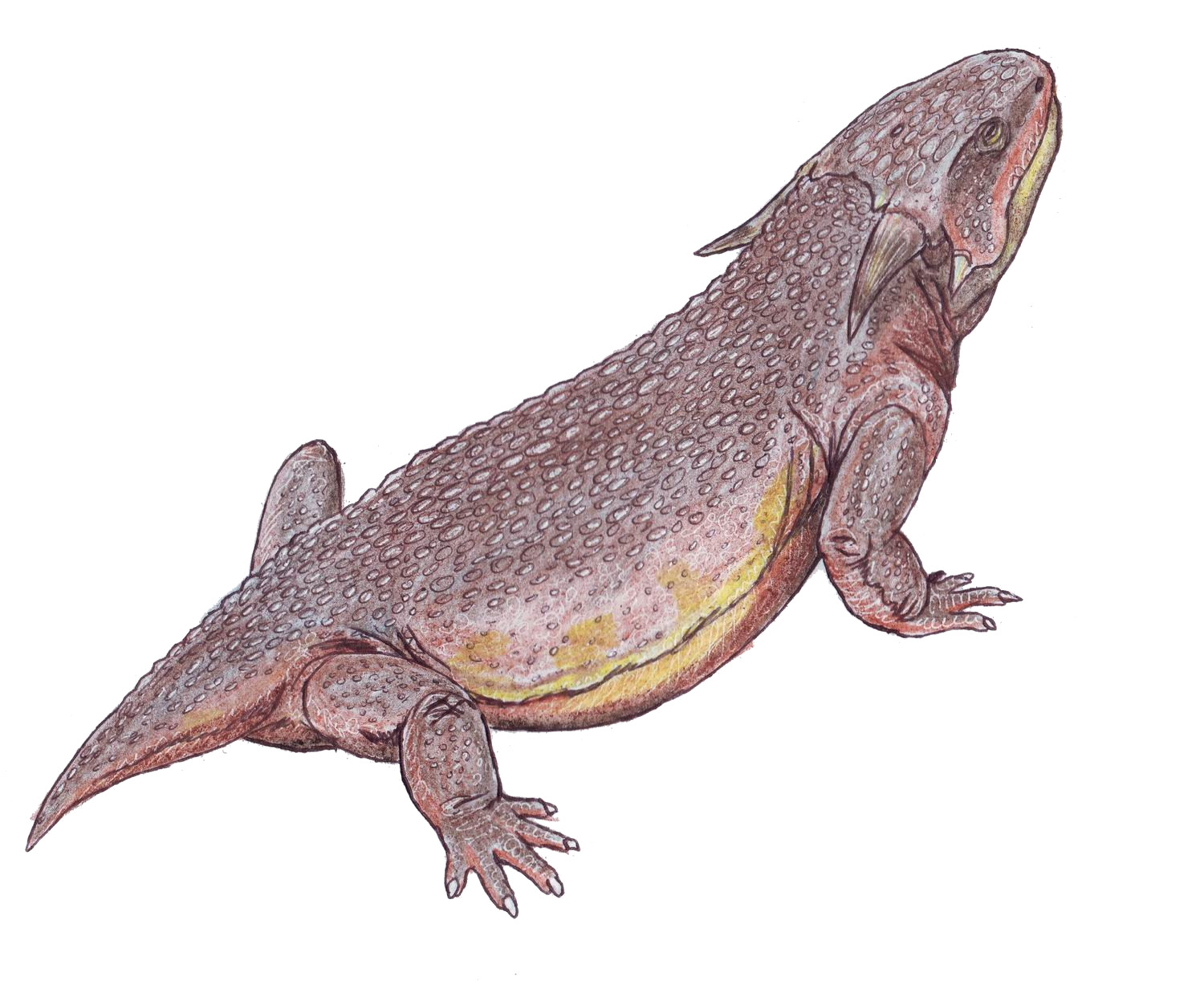Sclerosaurus on:
[Wikipedia]
[Google]
[Amazon]
 ''Sclerosaurus'' is an
''Sclerosaurus'' is an
 ''Sclerosaurus'' is an
''Sclerosaurus'' is an extinct
Extinction is the termination of an organism by the death of its Endling, last member. A taxon may become Functional extinction, functionally extinct before the death of its last member if it loses the capacity to Reproduction, reproduce and ...
genus
Genus (; : genera ) is a taxonomic rank above species and below family (taxonomy), family as used in the biological classification of extant taxon, living and fossil organisms as well as Virus classification#ICTV classification, viruses. In bino ...
of procolophonid
Procolophonidae is an extinct family of small, lizard-like parareptiles known from the Late Permian to Late Triassic that were distributed across Pangaea, having been reported from Europe, North America, China, South Africa, South America, Antarc ...
parareptile
Parareptilia ("near-reptiles") is an extinct group of Basal (phylogenetics), basal Sauropsida, sauropsids ("Reptile, reptiles"), traditionally considered the sister taxon to Eureptilia (the group that likely contains all living reptiles and birds ...
known from the Early
Early may refer to:
Places in the United States
* Early, Iowa, a city
* Early, Texas, a city
* Early Branch, a stream in Missouri
* Early County, Georgia
* Fort Early, Georgia, an early 19th century fort
Music
* Early B, stage name of Jamaican d ...
to Middle Triassic
In the geologic timescale, the Middle Triassic is the second of three epoch (geology), epochs of the Triassic period (geology), period or the middle of three series (stratigraphy), series in which the Triassic system (stratigraphy), system is di ...
of Germany
Germany, officially the Federal Republic of Germany, is a country in Central Europe. It lies between the Baltic Sea and the North Sea to the north and the Alps to the south. Its sixteen States of Germany, constituent states have a total popu ...
and Switzerland
Switzerland, officially the Swiss Confederation, is a landlocked country located in west-central Europe. It is bordered by Italy to the south, France to the west, Germany to the north, and Austria and Liechtenstein to the east. Switzerland ...
. It contains a single species, ''Sclerosaurus armatus''. It was fairly small, about 30 cm long, distinguished from other known parareptiles by the possession of long, backwardly projecting spikes, rear lower jaw teeth with slightly imbricating crowns, and a narrow band of back armor comprising two or three rows of sculptured osteoderm
Osteoderms are bony deposits forming scales, plates, or other structures based in the dermis. Osteoderms are found in many groups of extant and extinct reptiles and amphibians, including lizards, crocodilians, frogs, temnospondyls (extinct amph ...
s on either side of the midline.
Traditional classifications, e.g. Carroll (1988) placed ''Sclerosaurus'' with the procolophonids, however some phylogenetic
In biology, phylogenetics () is the study of the evolutionary history of life using observable characteristics of organisms (or genes), which is known as phylogenetic inference. It infers the relationship among organisms based on empirical dat ...
studies have found it to be a close relative of the pareiasaur
Pareiasaurs (meaning "cheek lizards") are an extinct clade of large, herbivorous parareptiles. Members of the group were armoured with osteoderms which covered large areas of the body. They first appeared in southern Pangea during the Middle Per ...
s, and together with that group it forms the clade Pareiasauroidea
Pareiasaurs (meaning "cheek lizards") are an extinct clade of large, herbivorous parareptiles. Members of the group were armoured with osteoderms which covered large areas of the body. They first appeared in southern Pangea during the Middle Per ...
.Jalil, N. E., & Janvier, P. (2005). Les pareiasaures (Amniota, Parareptilia) du Permien supérieur du Bassin d’Argana, Maroc. Geodiversitas, 27(1), 35-132. More recent phylogenetic analyses place ''Sclerosaurus'' within Procolophonidae
Procolophonidae is an extinct family (biology), family of small, lizard-like parareptiles known from the Late Permian to Late Triassic that were distributed across Pangaea, having been reported from Europe, North America, China, South Africa, Sou ...
as originally suggested, and support its referral to the Leptopleuroninae
Leptopleuroninae is an extinct subfamily of procolophonid reptiles. It is defined as all taxa closer to '' Leptopleuron lacertinum'' than to ''Procolophon trigoniceps''. The oldest member of Leptopleuroninae is '' Phonodus dutoitorum'' from the ...
. ''Sclerosaurus'' is most closely related to '' Scoloparia glyphanodon'' from Nova Scotia
Nova Scotia is a Provinces and territories of Canada, province of Canada, located on its east coast. It is one of the three Maritime Canada, Maritime provinces and Population of Canada by province and territory, most populous province in Atlan ...
, Canada
Canada is a country in North America. Its Provinces and territories of Canada, ten provinces and three territories extend from the Atlantic Ocean to the Pacific Ocean and northward into the Arctic Ocean, making it the world's List of coun ...
, and together they form the Sclerosaurini tribe within Leptopleuroninae.
References
Early Triassic reptiles of Europe Leptopleuroninae Middle Triassic reptiles of Europe Taxa named by Christian Erich Hermann von Meyer Fossil taxa described in 1857 Prehistoric reptile genera {{paleo-reptile-stub